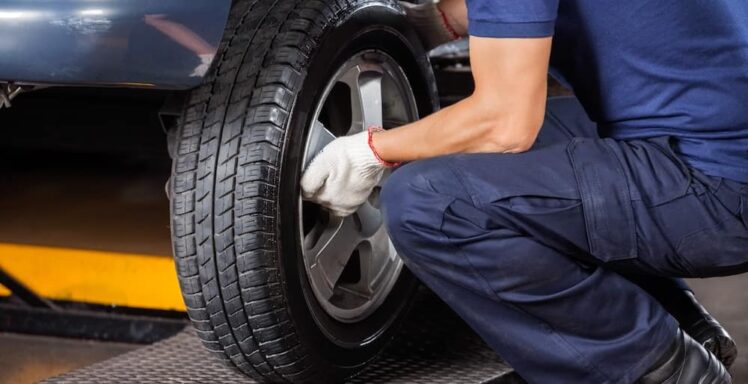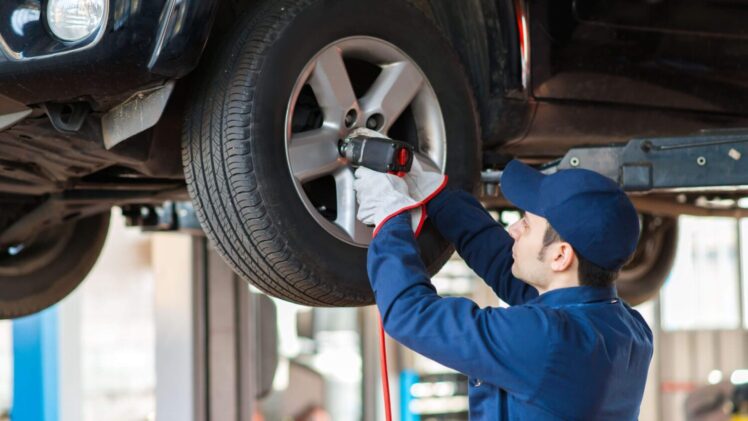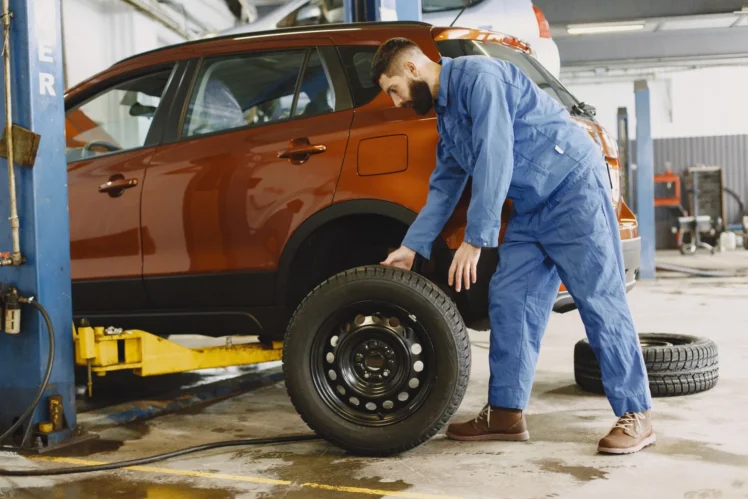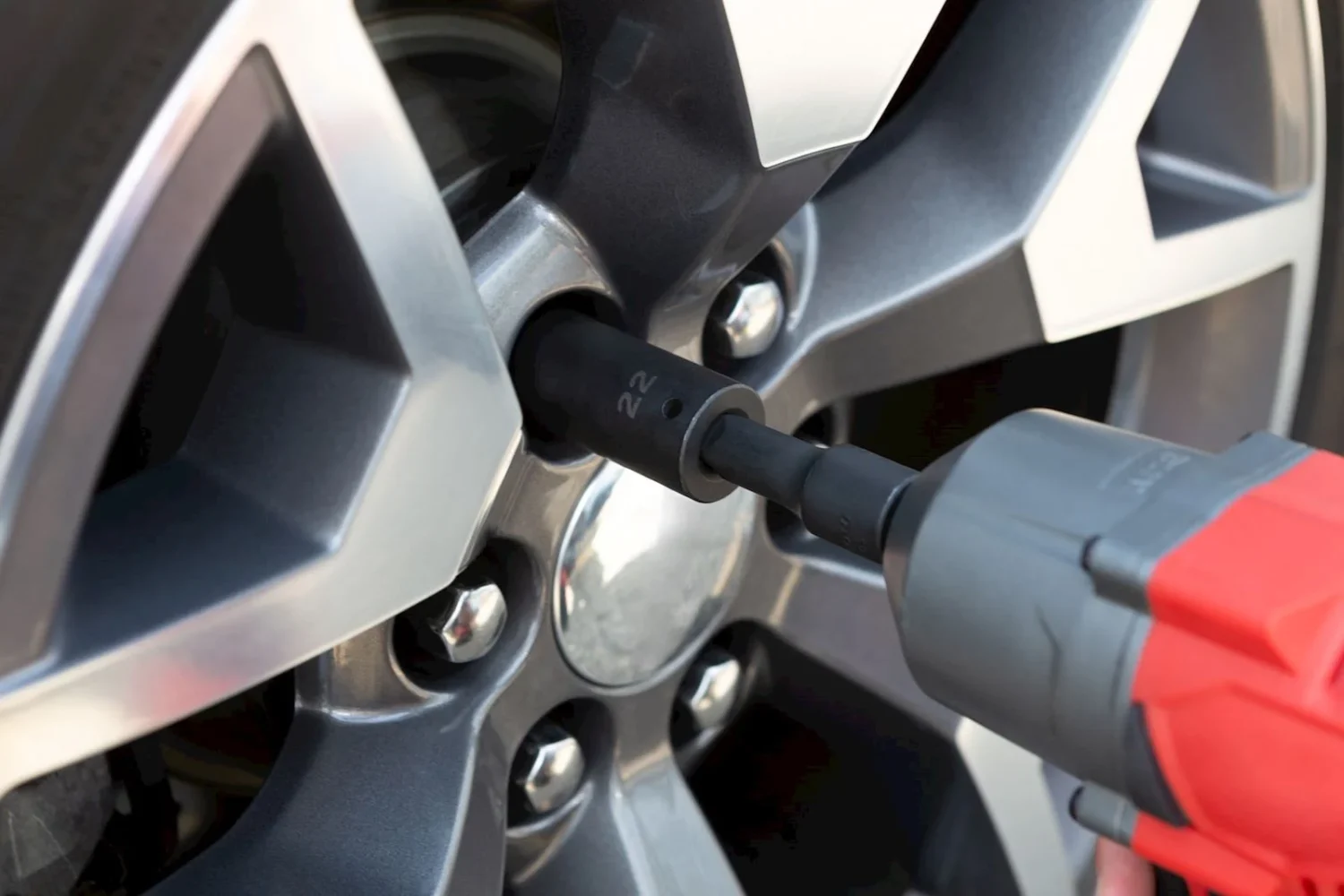As a driver, you want to make sure that your car’s excellent handling and safety are not compromised by tire problems. That’s why regular tire rotation is a crucial aspect of proper vehicle maintenance. Find out when to visit your local tire shop in Texas for tire rotation services.
What is Tire Rotation?

Tire rotation involves the practice of moving your tires from one wheel position to another, essentially reshuffling them. This process is undertaken to offset the uneven wear and tear that occurs when tires are consistently used in one location. For instance, the tire that was originally on the front left may be relocated to the back right, effectively reversing the wear pattern.
As a result, this redistribution of tires promotes more even tread wear across the entire tire surface, ensuring better balance. It also helps prevent the premature development of bald spots on either edge of the tire.
Tire rotations typically involve moving tires between the front and back positions as well as from left to right. A common rotation pattern may entail shifting the front right tire to the back left, the rear left tire to the front left, the front left tire to the back right, and the back right tire to the front right.
However, certain circumstances may necessitate different rotation patterns. For instance, some tires have a directional tread, meaning they can only be mounted in one specific direction, making it impossible to swap them from left to right. In such cases, rotation is limited to front-to-back shifts.
Additionally, some performance vehicles feature tires of varying sizes on their front and rear axles, limiting rotation to a left-to-right exchange. If these tires are also directional, rotation becomes impractical.
When You Should Get a Tire Rotation

When You Get an Oil Change
Many drivers find it convenient to have their tires rotated whenever they go in for an oil change, which typically happens every 5,000 to 7,500 miles. This practice helps ensure even wear across all tires and extends their overall lifespan. As long as you don’t notice any significant uneven wear patterns on your tires and your vehicle’s handling remains unaffected, following this rotation schedule should be sufficient. With tire rotation, you can promote balanced performance and maintain optimal traction on the road, contributing to a safer and smoother driving experience.
When You See Tread Wear
To prioritize your safety on the road, it’s crucial to devote some time each month to examining your tires. This simple yet essential task involves checking the air pressure and assessing the condition of the tire rubber. It’s also important to measure the tread depth on each tire. By doing so, you can identify any potential issues or signs of uneven wear. If you notice that one or two tires are wearing down significantly faster than the others, it’s a clear indication that a tire rotation is needed. This means moving the tires to different positions on your vehicle to promote even wear across all of them.
Every 3,000 to 6,000 Miles
A general recommendation is to have your tires rotated every 3,000 to 6,000 miles, but this can vary depending on how and where you drive. If you find yourself needing to brake frequently, your tires may wear down unevenly. When you brake, the weight of the car shifts towards the front wheels. If you often drive in stop-and-start traffic or on winding mountain roads with lots of downhill stretches, you might need to get your tires rotated more frequently. These driving conditions require increased braking, putting extra strain on the front tires. By getting your tires rotated more often in such situations, you can help maintain even wear and ensure better performance and safety on the road.
For Warranty Purposes
Rotating your tires periodically is crucial for maintaining their safety, and it’s even more important if you have an extended warranty. This means that if you forget to rotate your tires as required, any future replacements or repairs might not be covered by the warranty due to negligence. To avoid this, it’s wise to double-check the rotation schedule specified in your warranty and make sure to follow it diligently.
What Happens When You Neglect Tire Rotation

Reduced Traction
Tire treads are not only essential for rainy weather but also crucial for driving in snowy conditions. That’s why folks in snowy regions opt for special winter tires with exceptionally deep treads. Tires without enough tread, known as bald or partially bald tires, can be dangerous in snowy conditions. They can also pose problems on gravel roads, dirt paths, and even regular asphalt streets.
Risk of Hydroplaning
Tire treads are created with deep channels to effectively redirect water. When you encounter a puddle, these channels work to expel water away from your tires, ensuring that the tire surface maintains contact with the road. In contrast, severely worn-out tires will simply skim across the water’s surface, making it challenging, and at times impossible, to steer or manage your vehicle.
Tire Blowout
As your tire wears down, it can become so thin that it’s more prone to experiencing a blowout. Even without a blowout, a severely worn tire is more susceptible to getting punctured.
Overheating
When your tires rotate, they create friction by touching the road’s surface. Tires are designed to withstand this friction, and a crucial part of their design is the tire treads. Similar to how these channels channel away water from the tires, they also pull air through the treads, producing a cooling effect. If your tread is highly worn, it will offer less cooling, which raises the likelihood of tire problems.
Ask a Tire Shop in Texas for More Information

If you think you may need a tire rotation, get in touch with a tire shop in Texas for more information and schedule a service.

